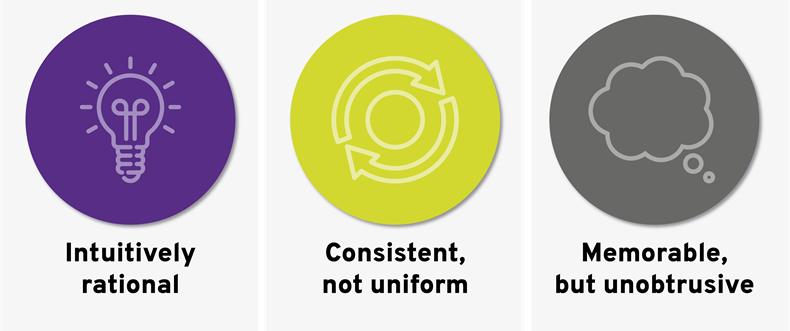Product Design Principles (and why they matter)

Author: Nicole Delfim - UI/UX Developer
We’ve been revamping our approach to User Experience and User Interface Design at 1Spatial, as we create a number of exciting new products and solutions. As the first step in this process, we devised our Product Design Principles in order to create a strong foundation to build upon.
But before we present our results, let’s talk about definitions.
What are Product Design Principles?
Product Design Principles are statements that capture what good design means for a company. It means summarising our main goals into the values we want to deliver to users, in a way that can be passed on to everyone in the team.
They are used to frame design decisions so it’s important to avoid ambiguity and to be concise. They must also be concrete, and directly applicable to the product so it can work as a common mindset to help find real solutions to design problems. That’s why it is crucial that the principles are clear and take a strong stance on the values they advocate.
While this is of course vital as an internal tool, we can also use these principles to educate stakeholders about what we do, how we do it and, most importantly, what we learned from user research and experimentation.
(It is important to note, this is not the same as the process of creating design patterns or guidelines, which is related to the rules and component libraries used to build the applications. This is also something we’ve been working on, so more on that soon!)
Why do we need them?
Defining Product Design Principles helps create alignment between teams by establishing a shared understanding and vocabulary. It’s a way of trying to point everyone involved in product development in the same direction, helping them prioritize and make more informed decisions. Essentially, we want to avoid random or subjective decisions based on what “looks good” or “feels right”.
Have you heard that "constraints fuel creativity”? Limitations can lead to great solutions since you're compelled to be resourceful: Product Design Principles not only tell you what you can do, but what not to do.
Having these core principles is equally useful for a more tuned onboarding process. By understanding our Product Design Principles, it gets easier for newcomers to learn who they are designing for and what matters for our users.
So, with all that in mind, we came up with our own set of Product Design Principles.
For 1Spatial, good design is...

...Intuitively rational
Our product interfaces must be intuitive. They need to be coherent with existing mental models. When designing systems, we prefer universal concepts and logic and to use the most recognizable terms, icons and components. Ultimately, our products must make sense with the real world.
...Consistent, not uniform
We strive for consistency across our products, always being mindful of unique requirements and users’ needs. The user must be able to quickly identify visual cues to efficiently perform tasks. Our products must collectively portray our brand values and build familiarity. Consistency leads to efficiency.
...Memorable, but unobtrusive
The interface must not get in the way of usability. It must be a platform and a tool, not an obstacle to overcome. It is not decorative or ornamental, but effective and useful. At the same time, it should not be easily forgettable. Our products are unique and special and must be remembered for the value they deliver.
Ultimately, at 1Spatial we believe our users can make the best use of their time by performing tasks, not trying to decipher how to use the product. If we can make this happen by providing intuitive systems (and an enjoyable experience), even better.
Open positions
We’ve got a number of open positions as we continue to grow, take a look and come and work with us!
Open Positions
